All aboard!
During the last couple of weeks I've found myself at two railway museums - one a premeditated visit; the other found by chance during a drive out into the Maine countryside.
Seashore Trolley Museum, in Kennebunkport, is the oldest and largest electric railway museum in the world.
Twelve photos from the visit:
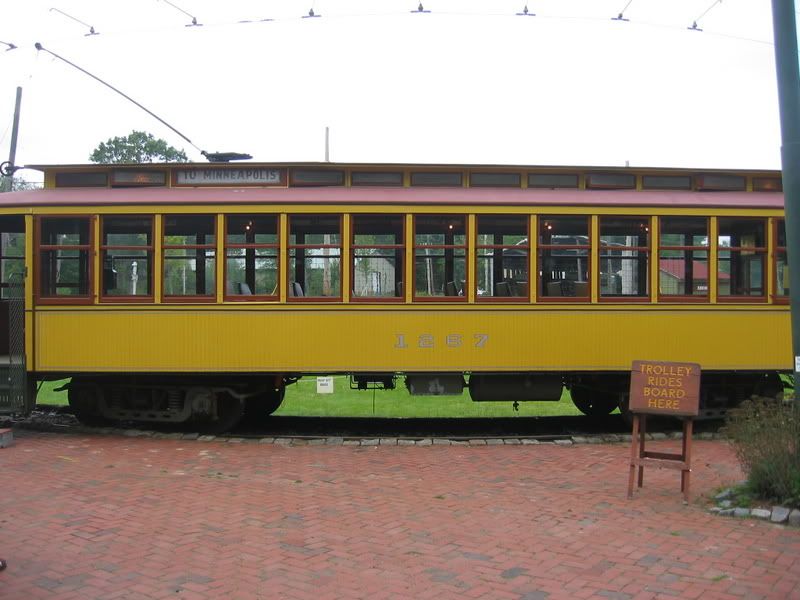

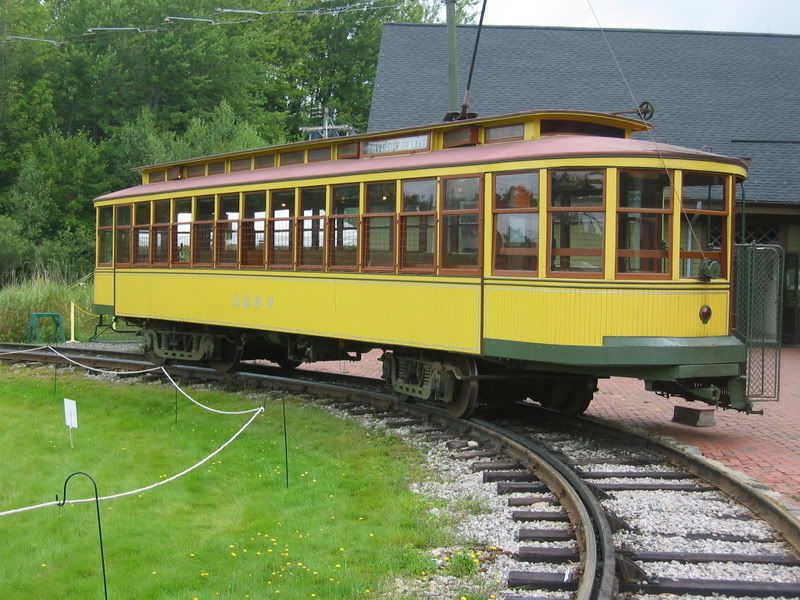
This Minneapolis-bound trolley wasn't our ride. I only have one picture of its exterior in my possession - see note below.
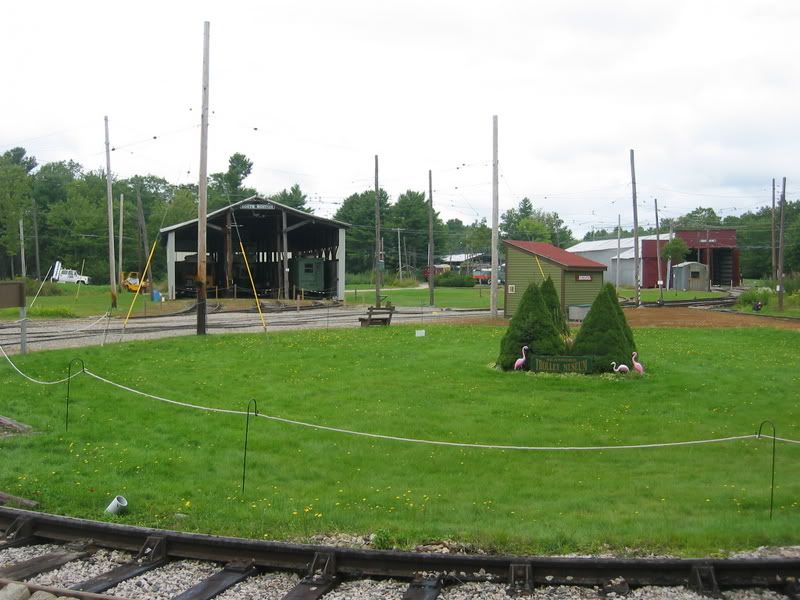
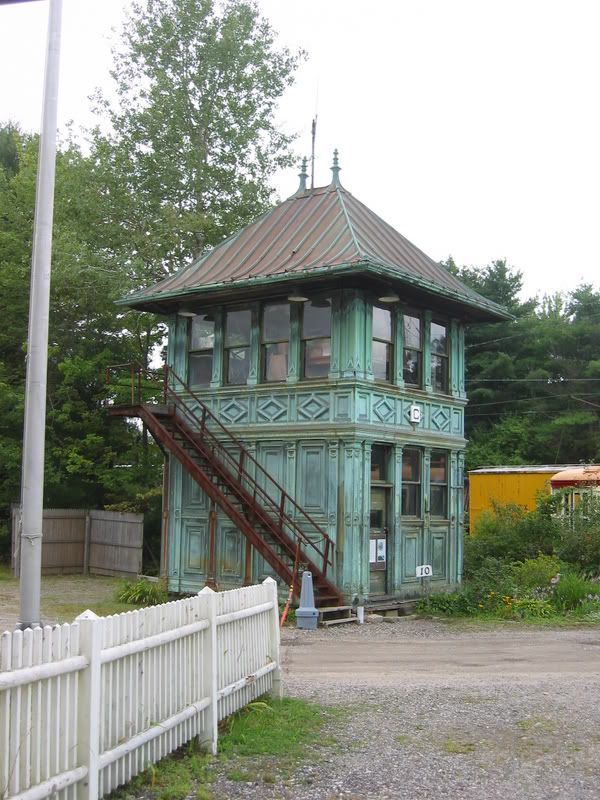
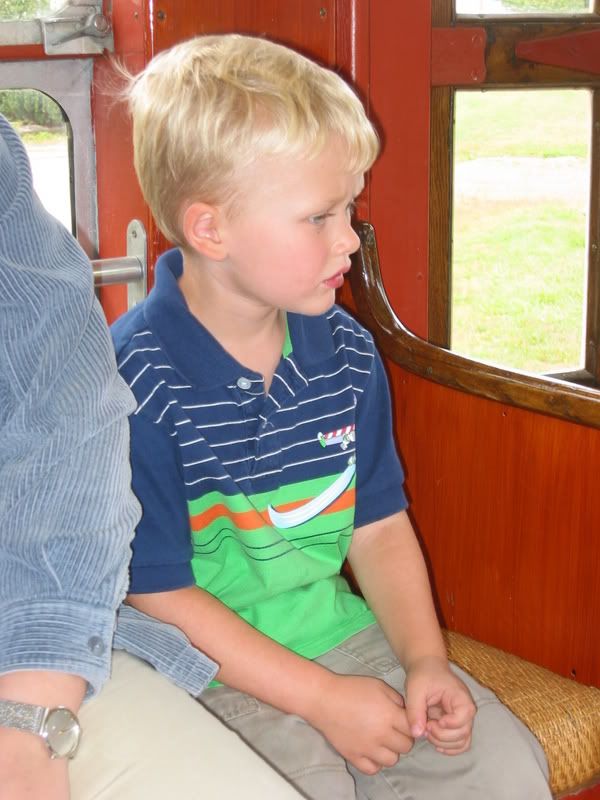
Ethan was a happy camper after he was allowed to ring the warning bell that sent us on the return leg of our journey.
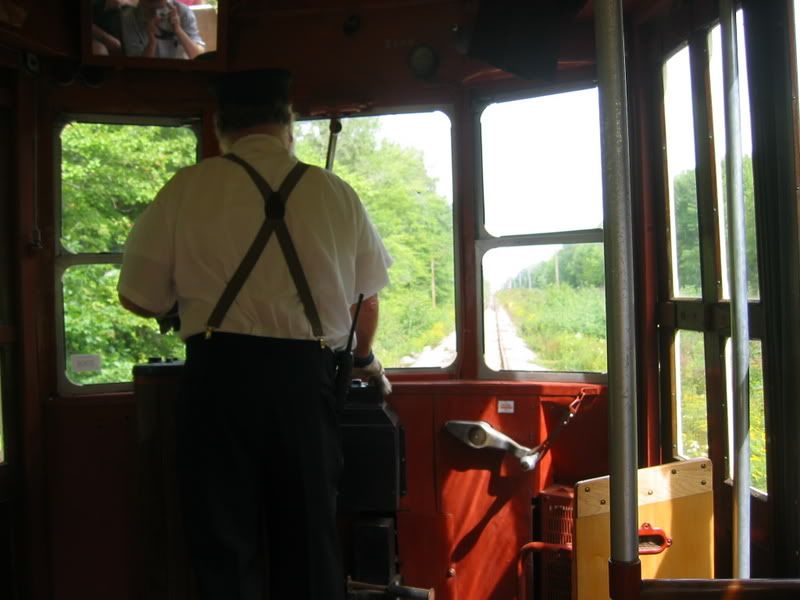
Our capable driver. And the very amateur photographer.
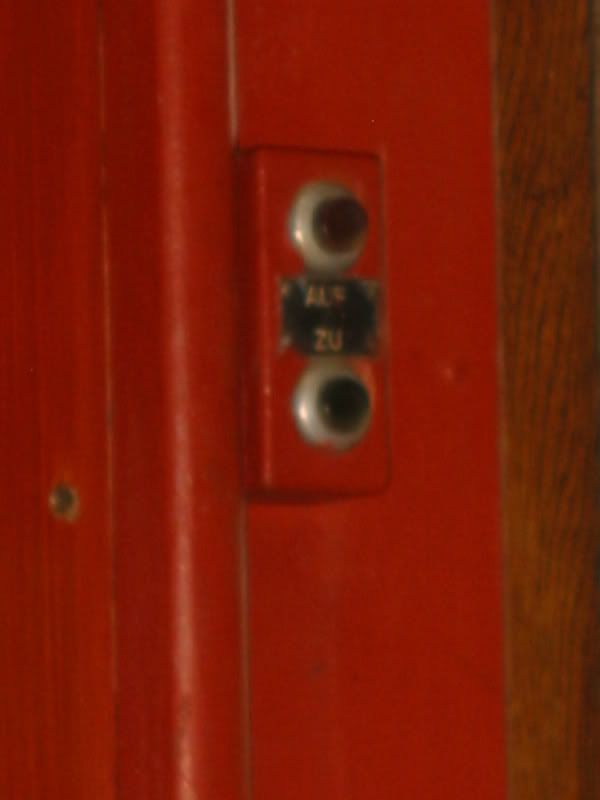
Open and Close. Evidence of the cab's days in Vienna (see story below). I was quite proud of myself for spotting that.
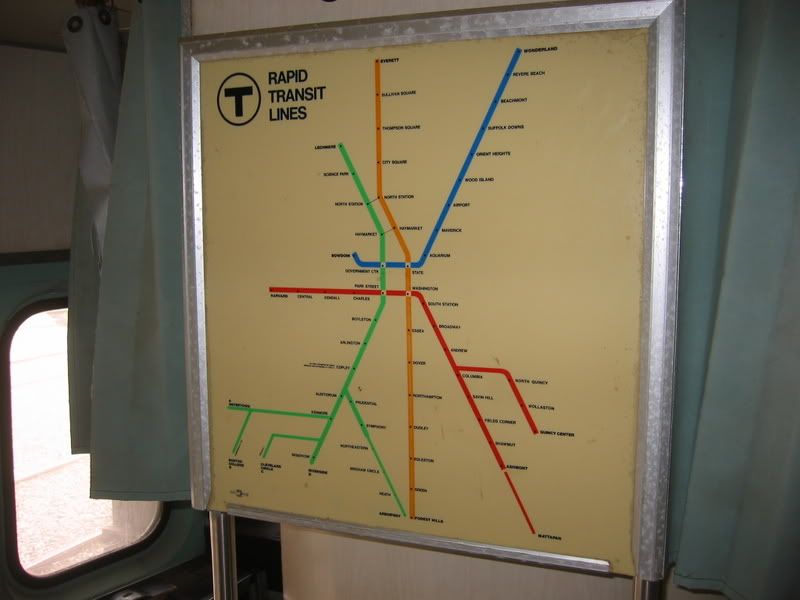
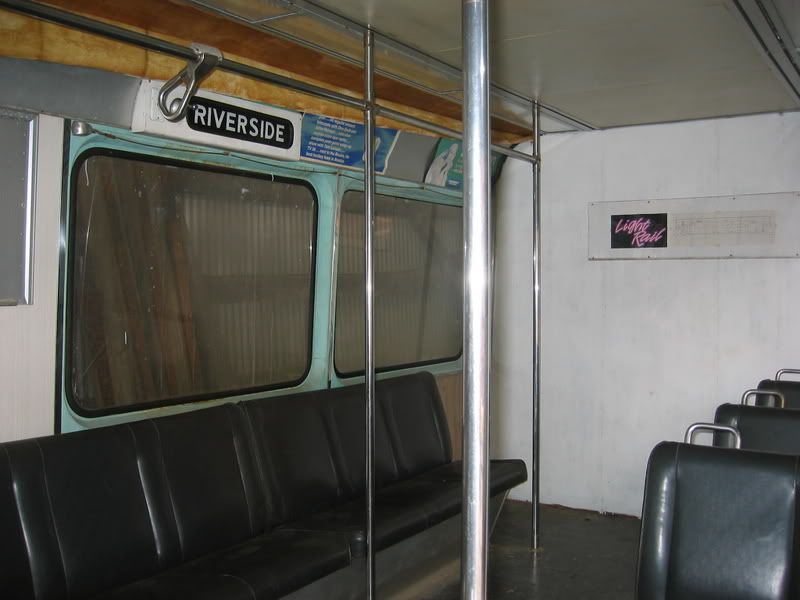
A mock-up of an old Boston "T" D-Line car. This one is in better condition than the majority of those operating today.
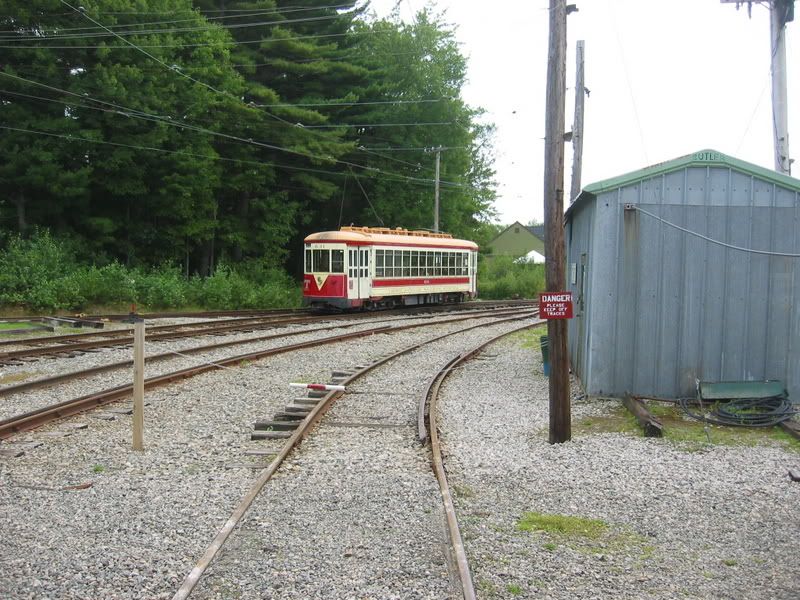
Our ride, the No. 631, on its next journey.
The majority of the day's pictures were taken with Liz's mother's camera. I'll include those and link to them at a later date.
The story of No. 631:
No. 631
New York City
1939-1948
Third Avenue Railway System
No. 631 represents the ultimate stage in development of Manhattan streetcars, and has a rich history. The franchise of the Third Railway System, the primary trolley operator in Manhattan and the Bronx, mandated a 5-cent fare, thus hampering the company's ability to raise capital. As well, the city government in the 1930s sought a modern image and wanted streetcars eliminated. As the company's franchise approached expiration in the latter part of the decade, the city would renew the franchise only if the company committed to eliminating trolleys by 1950.
Undaunted, the Third Avenue badly wanted to replace its aging fleet. The 5-cent fare prevented the Third Avenue from buying the modern PCC streamliners popular elsewhere, and purchase of second-hand cars was ruled out by unusually narrow track clearances in Manhattan, so the company opted for a home-built solution. They scoured the country looking for components such as motors, trucks, and control systems, and salvaged all usable parts from their old fleet. Over 300 "new" cars using these parts were turned out by 1940, but were retired within a decade. Still serviceable, many were sold second-hand to Lima, Peru; Bombay, India; and Sao Paulo, Brazil. No. 631 was sent to Vienna, Austria, as part of the Marshall Plan of aid to rebuild war-ravaged Europe.
The car ran in Vienna until the mid-1960s, when it was put in storage awaiting a 1981 trip to this museum. In the early 1990s, the car was completely restored to its New York configuration in the Museum's shops, financed by funds generously donated by Museum members.
Technical Details:
Builder: Third Avenue Ry. System, New York, 1939
Length: 42'7"
Weight: 37,540lbs
Trucks: Brill 77E
Seats: 46
Motors: 2 - WH 510A
On Saturday Liz and I stopped by Wiscasset, Waterville & Farmington Museum in Alna, on the site of the old Sheepscot station. We had zero cash, hence we couldn't afford the five-dollar ticket fee, but we shall return. The personable station master gave us a brief run-down of the station's history, and when I said we were from Portland, he pointed out a brochure for the Old Port's Maine Narrow Gauge Railroad Company & Museum, whose existence I previously knew nothing about.
Seashore Trolley Museum, in Kennebunkport, is the oldest and largest electric railway museum in the world.
Twelve photos from the visit:



This Minneapolis-bound trolley wasn't our ride. I only have one picture of its exterior in my possession - see note below.



Ethan was a happy camper after he was allowed to ring the warning bell that sent us on the return leg of our journey.

Our capable driver. And the very amateur photographer.

Open and Close. Evidence of the cab's days in Vienna (see story below). I was quite proud of myself for spotting that.


A mock-up of an old Boston "T" D-Line car. This one is in better condition than the majority of those operating today.

Our ride, the No. 631, on its next journey.
The majority of the day's pictures were taken with Liz's mother's camera. I'll include those and link to them at a later date.
The story of No. 631:
No. 631
New York City
1939-1948
Third Avenue Railway System
No. 631 represents the ultimate stage in development of Manhattan streetcars, and has a rich history. The franchise of the Third Railway System, the primary trolley operator in Manhattan and the Bronx, mandated a 5-cent fare, thus hampering the company's ability to raise capital. As well, the city government in the 1930s sought a modern image and wanted streetcars eliminated. As the company's franchise approached expiration in the latter part of the decade, the city would renew the franchise only if the company committed to eliminating trolleys by 1950.
Undaunted, the Third Avenue badly wanted to replace its aging fleet. The 5-cent fare prevented the Third Avenue from buying the modern PCC streamliners popular elsewhere, and purchase of second-hand cars was ruled out by unusually narrow track clearances in Manhattan, so the company opted for a home-built solution. They scoured the country looking for components such as motors, trucks, and control systems, and salvaged all usable parts from their old fleet. Over 300 "new" cars using these parts were turned out by 1940, but were retired within a decade. Still serviceable, many were sold second-hand to Lima, Peru; Bombay, India; and Sao Paulo, Brazil. No. 631 was sent to Vienna, Austria, as part of the Marshall Plan of aid to rebuild war-ravaged Europe.
The car ran in Vienna until the mid-1960s, when it was put in storage awaiting a 1981 trip to this museum. In the early 1990s, the car was completely restored to its New York configuration in the Museum's shops, financed by funds generously donated by Museum members.
Technical Details:
Builder: Third Avenue Ry. System, New York, 1939
Length: 42'7"
Weight: 37,540lbs
Trucks: Brill 77E
Seats: 46
Motors: 2 - WH 510A
On Saturday Liz and I stopped by Wiscasset, Waterville & Farmington Museum in Alna, on the site of the old Sheepscot station. We had zero cash, hence we couldn't afford the five-dollar ticket fee, but we shall return. The personable station master gave us a brief run-down of the station's history, and when I said we were from Portland, he pointed out a brochure for the Old Port's Maine Narrow Gauge Railroad Company & Museum, whose existence I previously knew nothing about.